2022 Ford F-150 Lightning Range Test Review

The 2022 Ford F-150 Lightning is a lot of things. A truck. An electric vehicle. And a party crasher.
When AutoGuide finally got a chance to test the all-electric version of the US and Canada’s best-selling vehicle on its home turf, of course we said yes. We had plans to put its towing and hauling capability to the test. The only problem: everyone’s already done that.
Then an opportunity presented itself. A local launch event for another pickup called for a multi-hour drive, a distance right around the Lightning’s quoted range. If most trucks are driven around hauling nothing but air, then wouldn’t this be a more relevant test?
That’s how I found myself putting over 500 miles (800 kilometers) on the F-150 Lightning. In the winter. In two days. I learned the Lightning is certainly roadtrip-able, but you’ll have to make a few compromises along the way.
Range estimates that work for you
Officially, this F-150 Lightning Lariat tester is rated at 320 miles of range in the US, or 515 km in Canada. Yet when I picked it up it was displaying just 360 km at around 95-percent battery. Needless to say, that’s a dramatic shortfall. Yet when I drove home, that remaining range barely budged.
That’s because the Lightning’s range estimates are based, at least partially, on your driving habits. Like most other EVs we’ve driven, energy efficiency is very sensitive to throttle position and vehicle speed. Treat the Lightning like a sport truck, which is all too easy with 580 instant-access horsepower, and watch the range plummet. I would not be doing that. Well, not too often, anyway.
SEE ALSO: 2023 Ram 2500 Rebel First Drive ReviewFirst stop: Odessa Township, Ontario
The door-to-door trip would be just 375 kilometers (233 miles), but I started slightly closer, on account of another work engagement. I was also able to replenish the battery before setting out, which brought it back up to 90-percent SoC. I could maybe straight-shot this, but it’d be dicey, and I had zero idea if my final destination even had a slow charger.
This presented the first big decision of the trip: do I take the slightly shorter, less populated route, hooking north earlier, or do I stick to the mind-numbing slog that is Highway 401?
SEE ALSO: 2021 Ford Mustang Mach-E GT Review: Quicker, Yet CompromisedThe answer is one that will become an increasingly common one as EV ownership expands: the one with the better charging infrastructure. A quick search shows Flo and ChargePoint stations up north, but the 100-plus kW chargers are unavailable before I set off. I’d have to settle for a 50-kW setup, which would take well over two hours to completely recharge the Lightning’s beefy 131-kWh battery pack, if needed.
Staying south opens up the option of ONroute, 24/7 stops along Ontario’s major highways that now feature Ivy 150-kW fast-chargers. With a useful spot for a charge, bathroom break and snack re-up located, I set the adaptive cruise control and point the Lightning’s bluff nose eastward.
SEE ALSO: 2022 Ford Bronco Everglades Review: 4 Cool Features and 2 That are NotThis is where another advantage makes itself known: BlueCruise. This stretch of the 401 is part of the 130,000 miles (209,000 km) Ford has mapped out for its hands-free driving assist. The system uses two cabin-mounted cameras to ensure the driver is still paying attention. It all works rather well, keeping the big truck in the middle of the right lane without sway. I’d appreciate a clearer signal for when BlueCruise is available, and especially when it disengages, however. GM’s Super Cruise has the edge there, with its unmissable light-up steering wheel rim. The small icon in the digital instrument panel isn’t enough here.
I arrive at Odessa with plenty of battery to spare. After 52 minutes I’ve regained 78.6 kWh, and paid $5.92 CAD for it. I find out later that this discounted rate is due to recent station maintenance. Typically, it’s $18.00 CAD per hour.
SEE ALSO: 2021 Ford F-150 Raptor Review: A Meaner, Smarter DinoSecond stop: Calabogie, Ontario
With enough juice in the Lightning to get to my destination and back—just in case—I leave the ONroute. It’s not long before I’m off the highway and onto twisting backroads. The Lightning is enormous, yet it’s hard to resist pushing it just a little around these parts. Unlike gas-powered F-150s, the Lightning features an independent rear suspension. Paired with the lower center of gravity from all those low-slung batteries, and the F-150 is remarkably poised for something this shape. A suspension that can seem just a little too stiff on the highway suddenly makes sense.
The sun is setting now, as we’re mere days away from the shortest day of the year. The Lightning’s headlights cut through the darkness, and the high beams throw light further than my glasses can provide a clear view. I’m cutting it close now, and so I dig further into that long-travel pedal, efficiency be damned.
The decision doesn’t backfire, because as I pull into the night’s lodging I clock a small charger. Success! I park up, pop open the Lightning’s port … and realize the charger end is completely encased in ice. Uh oh.
Not a problem. The event staff defrost the plug and get ‘er in there before I’m back from dinner. (Thanks, Richard!) When I wrap up the next evening, the Lightning is ready with a completely full battery. Yet it’s still showing just 365 kilometers (227 miles).
Third stop: Port Hope, Ontario
With no time crunch for the return trip home, I stick to country roads for longer, the slightly lower top speeds helping the Lightning claw back some range. It’s barely noticeable at first, but as the town names flash by in the inky blackness—Cloyne, Kaladar, Tweed—the remaining range ticks down slower than the trip meter adds up. By the time I rejoin the 401 and tag in my old friend B. Cruise once more, the Lightning is showing what would be a total of 400 km (249 mi) single-charge range.
I could one-shot it back home.
There’s just one problem there: I don’t have a charger at home. Well, that and we’re talking practically zero margin for error. I’m not having that call with the friendly local Ford PR rep, no thank you.
My stomach rumbles just before Port Hope, so I stop at the ONroute there. Since it’s on the eastbound side, there’s some slight back-tracking, so once I’ve committed the straight-shot is dead. I plug in with an indicated 90 km (56 miles) remaining.
It’s a shorter charge this time, 43 minutes providing 64.86 kWh of juice. I unplug shortly after 9PM, and I’m home an hour later.
The final tally: 850-ish km (528 mi), with $20.76 CAD spent on adding 143.46 kWh back into the battery. I averaged around 32 kWh/100 km, which is just under 2 miles per kWh. For comparison, an F-150 with the 5.0-liter V8 would require roughly $148 CAD of fuel, at current Toronto rates, to travel the same distance. Admittedly, that’s based on the combined fuel consumption figure, not just the highway one—but I’m being generous there, as petrol-powered vehicles are also affected by the cold.
SEE ALSO: 2022 Ford Bronco Raptor Review: First DriveVerdict: 2022 Ford F-150 Lightning Range Test Review
The 2022 Ford F-150 Lightning remains a deeply impressive rig. This one lost a little over 20 percent of its quoted range when driven sedately, which is well within the acceptable range in sub-zero temperatures. It did require 95 minutes of fast-charging time, though: even accounting for snack and bathroom breaks, that’s more time than you’d spend off the road in a gas truck.
It’s hard to argue with the one-seventh cost of electricity, however, and that’s on pricey public fast-chargers. The Lightning rides at least as well as the regular F-150 too, and it’s quicker and better handling.
Ford’s award-winner proved a capable long-distance companion on this test. It might still be hard to get hands on one, but those that can are getting the future.
Become an AutoGuide insider. Get the latest from the automotive world first by subscribing to our newsletter here.

Kyle began his automotive obsession before he even started school, courtesy of a remote control Porsche and various LEGO sets. He later studied advertising and graphic design at Humber College, which led him to writing about cars (both real and digital). He is now a proud member of the Automobile Journalists Association of Canada (AJAC), where he was the Journalist of the Year runner-up for 2021.
More by Kyle Patrick



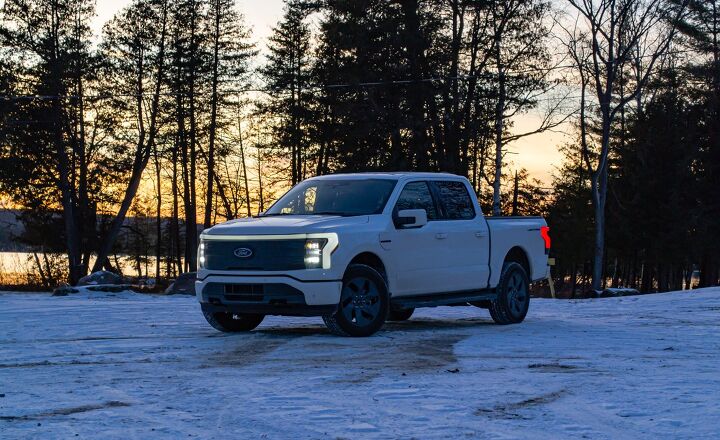























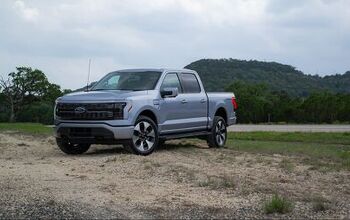
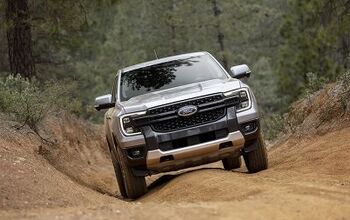

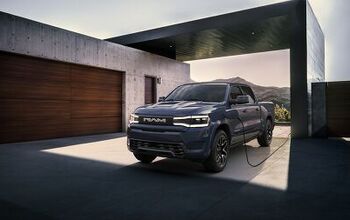
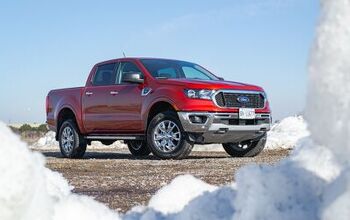



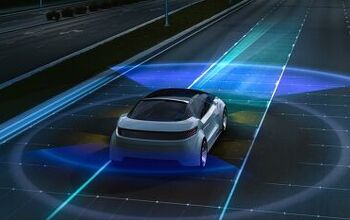
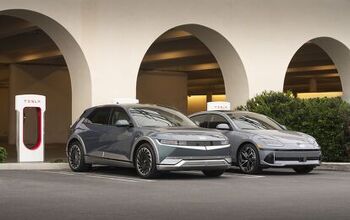
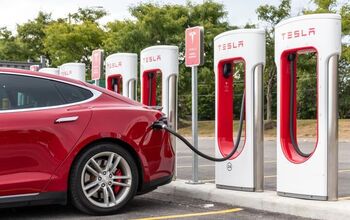


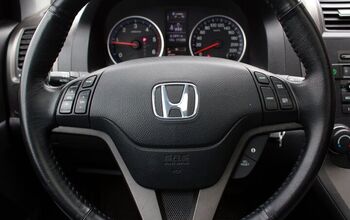

Comments
Join the conversation
Do you all realize how much studying, planning, range worrying the author had to do for one trip with an empty (toy) pickup truck? It's an expensive toy not capable of doing any real work. As far as cheap electricity cost. Do you really believe that cost will remain cheap with the increased demand and eliminating (outlawing) the use of fossil fuel? Trying to politically force change will have dramatic and costly consequences.
We have sold several lightnings and think they are the best EV truck out there. It really is a bummer on the shorter range of 200 miles. Also when you tow the milage goes to like 80 so thats not ideal, especially while trying to tow a wake boat. used trucks near logan